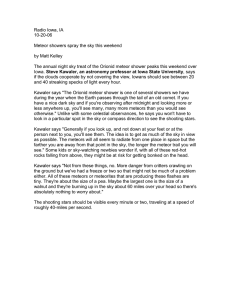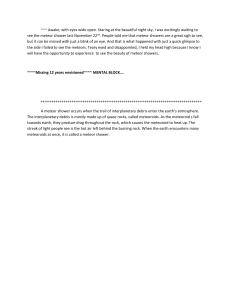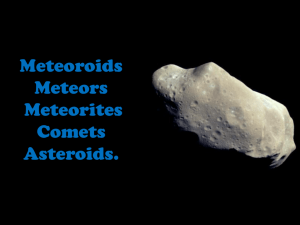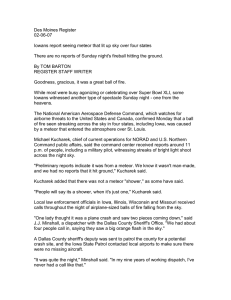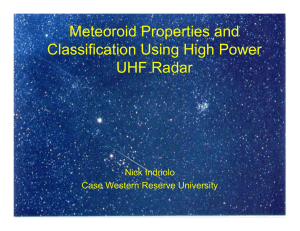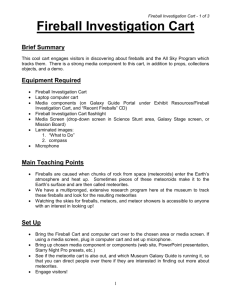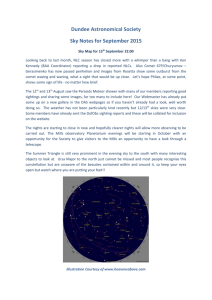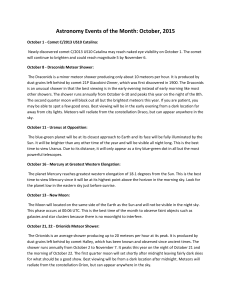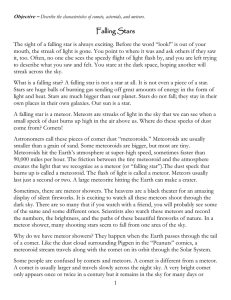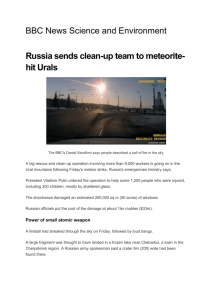taurid_meteor_shower - University of Colorado Boulder
advertisement
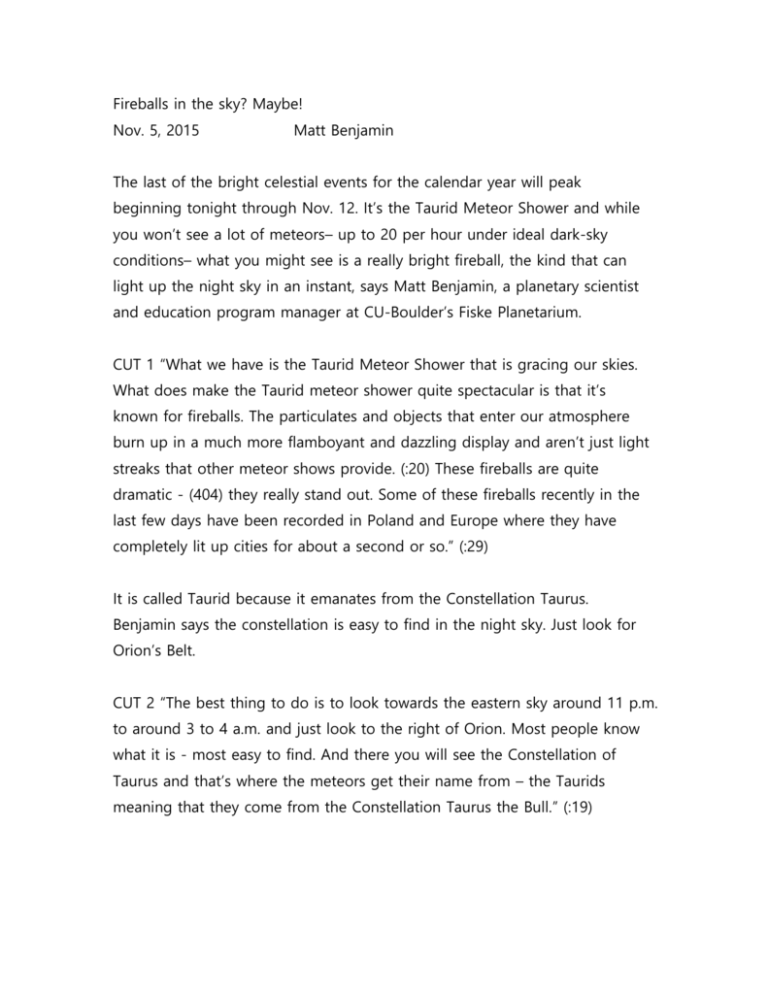
Fireballs in the sky? Maybe! Nov. 5, 2015 Matt Benjamin The last of the bright celestial events for the calendar year will peak beginning tonight through Nov. 12. It’s the Taurid Meteor Shower and while you won’t see a lot of meteors– up to 20 per hour under ideal dark-sky conditions– what you might see is a really bright fireball, the kind that can light up the night sky in an instant, says Matt Benjamin, a planetary scientist and education program manager at CU-Boulder’s Fiske Planetarium. CUT 1 “What we have is the Taurid Meteor Shower that is gracing our skies. What does make the Taurid meteor shower quite spectacular is that it’s known for fireballs. The particulates and objects that enter our atmosphere burn up in a much more flamboyant and dazzling display and aren’t just light streaks that other meteor shows provide. (:20) These fireballs are quite dramatic - (404) they really stand out. Some of these fireballs recently in the last few days have been recorded in Poland and Europe where they have completely lit up cities for about a second or so.” (:29) It is called Taurid because it emanates from the Constellation Taurus. Benjamin says the constellation is easy to find in the night sky. Just look for Orion’s Belt. CUT 2 “The best thing to do is to look towards the eastern sky around 11 p.m. to around 3 to 4 a.m. and just look to the right of Orion. Most people know what it is - most easy to find. And there you will see the Constellation of Taurus and that’s where the meteors get their name from – the Taurids meaning that they come from the Constellation Taurus the Bull.” (:19) The strongest recent Taurid show happened in 2005 and according to the international Meteor Organization there’s a good chance a few fireball sighting may again happen this time. CUT 3 “This year it’s not an overly dense cloud but what makes this a particularly good opportunity to see the meteors is that the moon is not bright and high in the sky. It’s going to be really helpful in being able to see these meteors and if you’re lucky enough you’ll get to see a big fireball. (:15) The Taurid meteors come from the Comet Encke – a periodic comet that orbits the sun once every 3.3 years. -CU-
